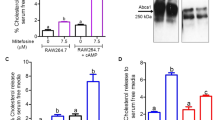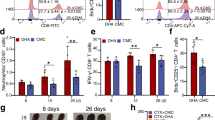Abstract
Fucoidan can cure both antimony-sensitive and antimony-resistant visceral leishmaniasis through immune activation. However, the signaling events underlying this cellular response remain uncharacterized. The present study reveals that fucoidan induces activation of p38 and ERK1/2 and NF-κB DNA binding in both normal and Leishmania donovani-infected macrophages, as revealed by western blotting and electrophoretic mobility shift assay (EMSA), respectively. Pharmacological inhibition of p38, ERK1/2 or the NF-κB pathway markedly attenuated fucoidan-induced pro-inflammatory cytokine synthesis and inducible nitric oxide synthase (iNOS) gene transcription, resulting in a reduction of parasite clearance. To decipher the underlying mechanism of fucoidan-mediated parasite suppression, the expression and functionality of various protein kinase C (PKC) isoforms were evaluated by immunoblotting and enzyme activity assay. Fucoidan elicited an increase in expression and activity of PKC-α, -βI and -βII isoforms in infected macrophages. Functional knockdown of PKC-α and -β resulted in downregulation of p38 and ERK1/2, along with a marked reduction of IL-12 and TNF-α production in fucoidan-treated infected macrophages. Collectively, these results suggest that the curative effect of fucoidan is mediated by PKC-dependent activation of the mitogen-activated protein kinase (MAPK)/NF-κB pathway, which ultimately results in the production of nitric oxide (NO) and disease-resolving pro-inflammatory cytokines.
This is a preview of subscription content, access via your institution
Access options
Subscribe to this journal
Receive 12 digital issues and online access to articles
$119.00 per year
only $9.92 per issue
Buy this article
- Purchase on Springer Link
- Instant access to full article PDF
Prices may be subject to local taxes which are calculated during checkout






Similar content being viewed by others
References
Gantt KR, Goldman TL, McCormick ML, Miller MA, Jeronimo SM, Nascimento ET et al. Oxidative responses of human and murine macrophages during phagocytosis of Leishmania chagasi. J Immunol 2001; 167: 893–901.
Olivier M, Brownsey RW, Reiner NE . Defective stimulus-response coupling in human monocytes infected with Leishmania donovani is associated with altered activation and translocation of protein kinase C. Proc Natl Acad Sci USA 1992; 89: 7481–7485.
Mookerjee Basu J, Mookerjee A, Sen P, Bhaumik S, Sen P, Banerjee S, Naskar K et al. Sodium antimony gluconate induces generation of reactive oxygen species and nitric oxide via phosphoinositide 3-kinase and mitogen-activated protein kinase activation in Leishmania donovani-infected macrophages. Antimicrob Agents Chemother 2006; 50: 1788–1797.
Descoteaux A, Matlashewski G, Turco SJ . Inhibition of macrophage protein kinase C-mediated protein phosphorylation by Leishmania donovani lipophosphoglycan. J Immunol 1992; 149: 3008–3015.
Kar S, Ukil A, Sharma G, Das PK . MAPK-directed phosphatases preferentially regulate pro- and anti-inflammatory cytokines in experimental visceral leishmaniasis: involvement of distinct protein kinase C isoforms. J Leukoc Biol 2010; 88: 9–20.
Chen BC, Lin WW . PKC- and ERK-dependent activation of I kappa B kinase by lipopolysaccharide in macrophages: enhancement by P2Y receptor-mediated CaMK activation. Br J Pharmacol 2001; 134: 1055–1065.
Grigoriadis G, Zhan Y, Grumont RJ, Metcalf D, Handman E, Cheers C et al. The Rel subunit of NF-kappaB-like transcription factors is a positive and negative regulator of macrophage gene expression: distinct roles for Rel in different macrophage populations. EMBO J 1996; 15: 7099–7107.
Speirs K, Caamano J, Goldschmidt MH, Hunter CA, Scott P . NF-kappa B2 is required for optimal CD40-induced IL-12 production but dispensable for Th1 cell differentiation. J Immunol 2002; 168: 4406–4413.
Martiny A, Meyer-Fernandes JR, de Souza W, Vannier-Santos MA . Altered tyrosine phosphorylation of ERK1 MAP kinase and other macrophage molecules caused by Leishmania amastigotes. Mol Biochem Parasitol 1999; 102: 1–12.
Nandan D, Lo R, Reiner NE . Activation of phosphotyrosine phosphatase activity attenuates mitogen-activated protein kinase signaling and inhibits c-FOS and nitric oxide synthase expression in macrophages infected with Leishmania donovani. Infect Immun 1999; 67: 4055–4063.
Ajizian SJ, English BK, Meals EA . Specific inhibitors of p38 and extracellular signal-regulated kinase mitogen-activated protein kinase pathways block inducible nitric oxide synthase and tumor necrosis factor accumulation in murine macrophages stimulated with lipopolysaccharide and interferon-gamma. J Infect Dis 1999; 179: 939–944.
Junghae M, Raynes JG . Activation of p38 mitogen-activated protein kinase attenuates Leishmania donovani infection in macrophages. Infect Immun 2002; 70: 5026–5035.
Goebeler M, Gillitzer R, Kilian K, Utzel K, Bröcker EB, Rapp UR et al. Multiple signaling pathways regulate NF-kappaB-dependent transcription of the monocyte chemoattractant protein-1 gene in primary endothelial cells. Blood 2001; 97: 46–55.
Barroso EM, Costa LS, Medeiros VP, Cordeiro SL, Costa MS, Franco CR et al. A non-anticoagulant heterofucan has antithrombotic activity in vivo. Planta Med 2008; 74: 712–718.
Chen JH, Lim JD, Sohn EH, Choi YS, Han ET . Growth-inhibitory effect of a fucoidan from brown seaweed Undaria pinnatifida on Plasmodium parasites. Parasitol Res 2009; 104: 245–250.
Kim MH, Joo HG . Immunostimulatory effects of fucoidan on bone marrow-derived dendritic cells. Immunol Lett 2008; 115: 138–143.
Nakamura T, Suzuki H, Wada Y, Kodama T, Doi T . Fucoidan induces nitric oxide production via p38 mitogen-activated protein kinase and NF-kappaB-dependent signaling pathways through macrophage scavenger receptors. Biochem Biophys Res Commun 2006; 343: 286–294.
Zhang Z, Teruya K, Eto H, Shirahata S . Fucoidan extract induces apoptosis in MCF-7 cells via a mechanism involving the ROS-dependent JNK activation and mitochondria-mediated pathways. PLoS ONE 2011; 6: e27441.
Kar S, Sharma G, Das PK . Fucoidan cures infection with both antimony-susceptible and -resistant strains of Leishmania donovani through Th1 response and macrophage-derived oxidants. J Antimicrob Chemother 2011; 66: 618–625.
Li B, Lu F, Wei X, Zhao R . Fucoidan: structure and bioactivity. Molecules 2008; 13: 1671–1695.
Holtkamp AD, Kelly S, Ulber R, Lang S . Fucoidans and fucoidanases—focus on techniques for molecular structure elucidation and modification of marine polysaccharides. Appl Microbiol Biotechnol 2009; 82: 1–11.
Ukil A, Biswas A, Das T, Das T . 18 Beta-glycyrrhetinic acid triggers curative Th1 response and nitric oxide up-regulation in experimental visceral leishmaniasis associated with the activation of NF-kappa B. J Immunol 2005; 175: 1161–1169.
Das L, Datta N, Bandyopadhyay S, Das PK . Successful therapy of lethal murine visceral leishmaniasis with cystatin involves up-regulation of nitric oxide and a favorable T cell response. J Immunol 2001; 166: 4020–4028.
Kar S, Ukil A, Das PK . Signaling events leading to the curative effect of cystatin on experimental visceral leishmaniasis: involvement of ERK1/2, NF-kappaB and JAK/STAT pathways. Eur J Immunol 2009; 39: 741–751.
Bhattacharyya S, Ghosh S, Sen P, Roy S, Majumdar S . Selective impairment of protein kinase C isotypes in murine macrophage by Leishmania donovani. Mol Cell Biochem 2001; 216: 47–57.
Giorgione JR, Turco SJ, Epand RM . Transbilayer inhibition of protein kinase C by the lipophosphoglycan from Leishmania donovani. Proc Natl Acad Sci USA 1996; 93: 11634–11639.
Ghosh S, Bhattacharyya S, Sirkar M, Sa GS, Das T, Majumdar D et al. Leishmania donovani suppresses activated protein 1 and NF-kappaB activation in host macrophages via ceramide generation: involvement of extracellular signal-regulated kinase. Infect Immun 2002; 70: 6828–6838.
Awasthi A, Mathur RK, Saha B . Immune response to Leishmania infection. Indian J Med Res 2004; 119: 238–258.
Rogers KA, DeKrey GK, Mbow ML, Gillespie RD, Brodskyn CI, Titus RG . Type 1 and type 2 responses to Leishmania major. FEMS Microbiol Lett 2002; 209: 1–7.
Hernandez-Pando R, Aguilar-Leon D, Orozco H, Serrano A, Ahlem C, Trauger R et al. 16alpha-Bromoepiandrosterone restores T helper cell type 1 activity and accelerates chemotherapy-induced bacterial clearance in a model of progressive pulmonary tuberculosis. J Infect Dis 2005; 191: 299–306.
Bhattacharjee S, Gupta G, Bhattacharya P, Mukherjee A, Mujumdar SB, Pal P et al. Quassin alters the immunological patterns of murine macrophages through generation of nitric oxide to exert antileishmanial activity. J Antimicrob Chemother 2009; 63: 317–324.
Queiroz KC, Medeiros VP, Queiroz LS, Abreu LR, Rocha HA, Ferreira CV, et al. Inhibition of reverse transcriptase activity of HIV by polysaccharides of brown algae. Biomed Pharmacother 2008; 62: 303–307.
Patankar MS, Oehninger S, Barnett T, Williams RL, Clark GF . A revised structure for fucoidan may explain some of its biological activities. J Biol Chem 1993; 268: 21770–21776.
Suppiramaniam V, Vaithianathan T, Manivannan K, Dhanasekaran M, Parameshwaran K, Bahr BA . Modulatory effects of dextran sulfate and fucoidan on binding and channel properties of AMPA receptors isolated from rat brain. Synapse 2006; 60: 456–464.
Hsu HY, Chiu SL, Wen MH, Chen KY, Hua KF . Ligands of macrophage scavenger receptor induce cytokine expression via differential modulation of protein kinase signaling pathways. J Biol Chem 2001; 276: 28719–28730.
Sudan R, Srivastava N, Pandey SP, Majumdar S, Saha B . Reciprocal regulation of protein kinase C isoforms results in differential cellular responsiveness. J Immunol 2012; 188: 2328–2337.
Acknowledgements
This work was supported by the Network Project (BSC 0206), a Supra Institutional Project (BSC 0114) grant of the Council of Scientific and Industrial Research and the J C Bose Fellowship (DST), Government of India.
Author information
Authors and Affiliations
Corresponding author
Rights and permissions
About this article
Cite this article
Sharma, G., Kar, S., Basu Ball, W. et al. The curative effect of fucoidan on visceral leishmaniasis is mediated by activation of MAP kinases through specific protein kinase C isoforms. Cell Mol Immunol 11, 263–274 (2014). https://doi.org/10.1038/cmi.2013.68
Received:
Revised:
Accepted:
Published:
Issue Date:
DOI: https://doi.org/10.1038/cmi.2013.68
Keywords
This article is cited by
Arsenic exposure to mouse visceral leishmaniasis model through their drinking water linked to the disease exacerbation via modulation in host protective immunity: a preclinical study
Scientific Reports (2023)
Effects of fucoidan on the hematic indicators and antioxidative responses of Nile tilapia (Oreochromis niloticus) fed diets contaminated with aflatoxin B1
Environmental Science and Pollution Research (2020)



